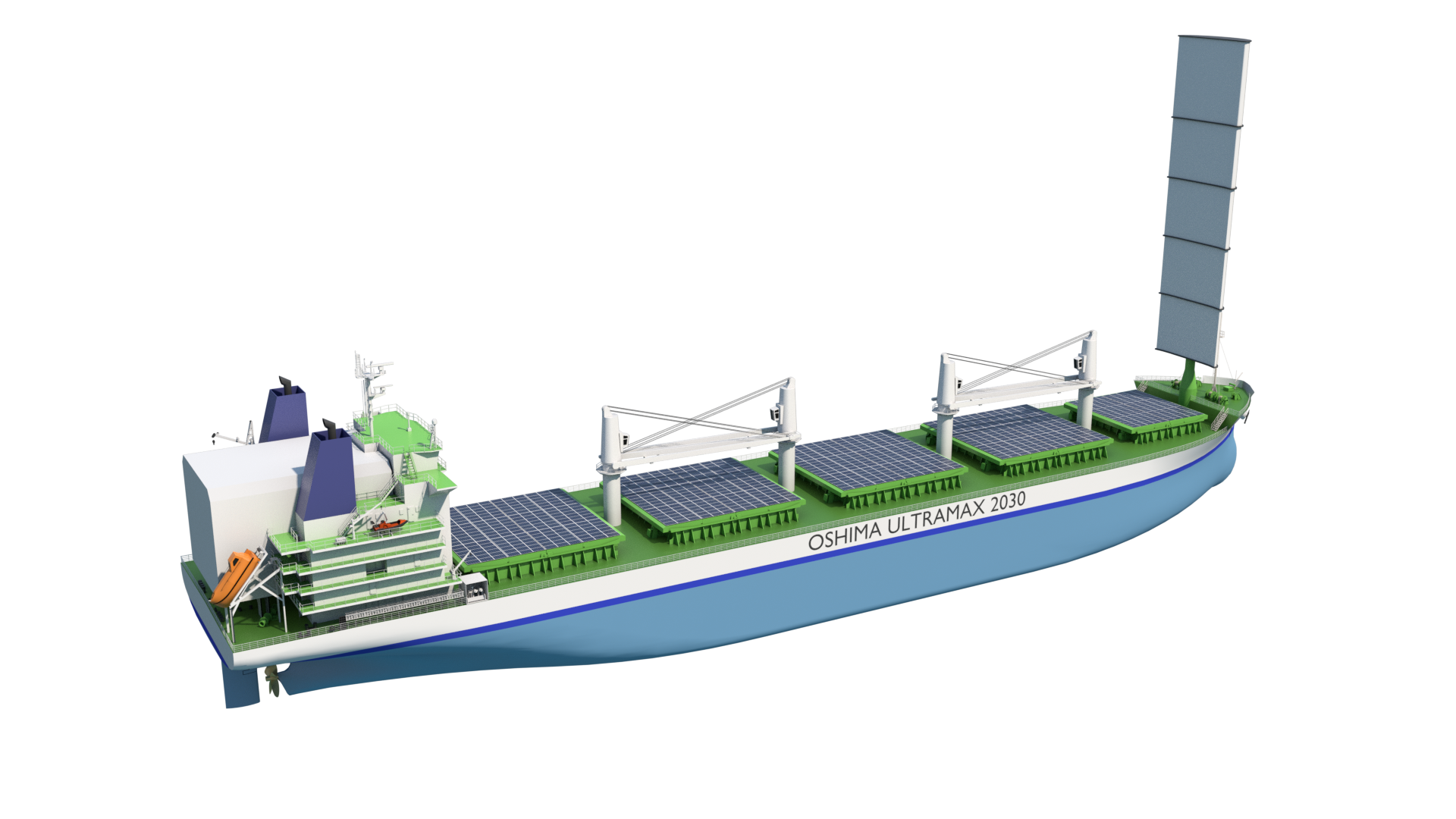Bulk carrier design
to meet IMO 2030 targets

The new Ultramax bulk carrier design meets the IMO 2030 environmental targets (Source: Wärtsilä)
The technology group Wärtsilä, Japanese shipbuilder Oshima Shipbuilding, and the classification society DNV GL have delivered the first results of their joint industry development project. At the recent Nor-Shipping exhibition held in Norway, the project partners announced a next-generation 62,000dwt Ultramax bulk carrier design that is optimised according to actual operating profiles, and that will meet upcoming emissions legislation. The design demonstrates that emission levels from conventional merchant vessels can be significantly reduced in line with International Maritime Organization (IMO) targets.
The project goals included the achievement of low emission levels, both at sea and in port, the fulfilment of the IMO’s requirements to reduce CO2 emissions per ship´s capacity-mile by at least 40% by 2030, and zero emissions during waiting time. A further aim of the project has been to create a new standard that maximises the return on investment (ROI) for the owner. A key objective was to minimise greenhouse gas (GHG) emissions through the application of currently available technologies.
“To help the industry meet the ambitious GHG reduction targets set by the IMO, the industry needs to come together to advance ship design. This design halves the Energy Efficiency Design Index of comparable vessels, and sets a new standard for low emission bulk carriers,” said Trond Hodne, director of Sales and Marketing at DNV GL.
Other benefits include the ability to operate in an environmental mode while in port through the main use of solar panels, the installation of an LNG tank that is dimensioned based on the capacity needed for the operating profiles and the availability of LNG bunkering infrastructure, an optimised hull shape, and the option to install a hard sail to generate extra propulsion. The hard sail system is being developed jointly by Oshima Shipbuilding and Mitsui O.S.K. Lines.
